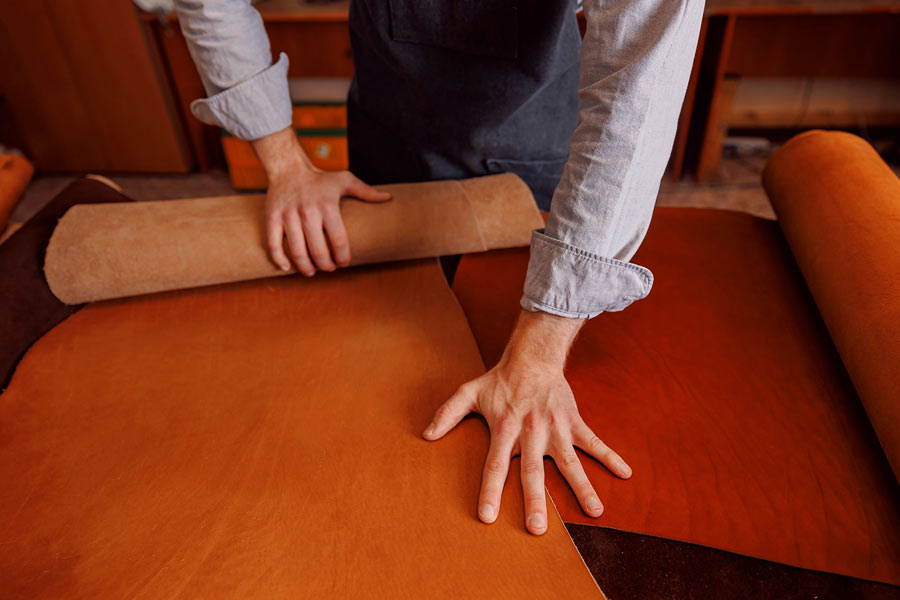
19 Jul What Are the Benefits of Modern Leather Tools? Enhancing Precision and Efficiency in Craftsmanship
Leatherworking has come a long way from its humble beginnings. Once relying solely on manual tools and traditional techniques, today’s leather artisans have a wealth of modern tools at their disposal. These advancements have not only transformed the craft but also significantly enhanced the precision, efficiency, and overall quality of leather products. In this blog post, we’ll explore the myriad benefits that modern leather tools bring to the table and how they are revolutionizing the leatherworking industry.
1. Precision in Cutting and Shaping
Gone are the days when leatherworkers had to rely solely on hand-cutting techniques that often led to uneven edges and wasted material. Modern tools like laser cutters and precision knives have dramatically changed the game.
Precision Knives
Precision knives, with their ergonomic designs and replaceable blades, offer unparalleled control and sharpness. These tools are perfect for detailed work, allowing artisans to cut leather with clean, smooth edges, thereby reducing the time needed for subsequent finishing processes.
2. Efficiency in Stitching and Assembly
Stitching and assembling leather goods can be a labor-intensive process. Modern sewing machines and stitching tools have significantly improved efficiency and durability in leathercraft.
Modern Sewing Machines
Advanced sewing machines designed specifically for leather can handle thick, tough materials with ease. Features like adjustable stitch lengths and powerful motors ensure consistent, durable stitches, even through multiple layers of leather. This streamlines the assembly process, reducing the time and effort required to create high-quality products.
Stitching Tools
Specialized stitching tools, such as pricking irons and stitching groovers, ensure that stitches are evenly spaced and securely placed. These tools not only enhance the aesthetic appeal of the finished product but also contribute to its structural integrity, ensuring that the seams are strong and long-lasting.
3. Versatility of Leather Working Machines
Modern leatherworking machines offer versatility and consistency, making it easier for artisans to achieve professional results.
Embossing Machines
Embossing machines allow for the creation of raised designs on leather surfaces. These machines can apply intricate patterns with consistent pressure, ensuring uniformity across multiple pieces. This adds a touch of elegance and uniqueness to leather goods, making them stand out in the market.
Skiving Machines
Skiving machines thin the edges of leather pieces, making them easier to fold and stitch. This is particularly useful for creating clean, professional-looking seams and reducing bulk in finished products. The precision of skiving machines ensures that the leather is thinned evenly, enhancing both the appearance and functionality of the item.
Edge Finishing Machines
Edge finishing machines smooth and seal the edges of leather products, giving them a polished, professional look. These machines can apply edge paint or burnish the edges, creating a consistent finish that enhances the durability and aesthetic appeal of the product.
4. Innovation in Leather Treatment and Finishing
Advancements in leather treatment technologies have brought significant improvements in the durability and aesthetic qualities of leather goods.
Enhanced Durability
Modern treatments, such as waterproofing sprays and conditioners, enhance the durability of leather, making it resistant to water, stains, and wear. These treatments extend the lifespan of leather products, ensuring that they remain in excellent condition for years.
Aesthetic Appeal
Innovative finishing techniques, such as dyeing and patina development, allow artisans to achieve a wide range of colors and finishes. These techniques can create unique, custom looks that appeal to consumers seeking one-of-a-kind leather goods.
5. Ergonomic Design for Comfort and Safety
The physical demands of leatherworking can take a toll on artisans. Modern tools with ergonomic designs help reduce strain and improve productivity.
Adjustable Handles
Tools with adjustable handles allow artisans to maintain a comfortable grip, reducing hand fatigue during long work sessions. This enhances precision and control, allowing for more detailed and intricate work.
Safety Mechanisms
Safety features, such as blade guards and non-slip grips, minimize the risk of accidents and injuries. These mechanisms ensure that artisans can work confidently and efficiently, focusing on their craft without worrying about safety hazards.
Conclusion
Modern leather tools have revolutionized the art of leatherworking, offering unprecedented precision, efficiency, and versatility. From advanced cutting and stitching tools to innovative treatment technologies and ergonomic designs, these tools empower artisans to elevate their craft and create high-quality, durable leather goods. By embracing technological advancements, leatherworkers can not only enhance their skills but also ensure that their products meet the highest standards of quality and craftsmanship.
Encouraging artisans to embrace these modern tools and techniques will help preserve the rich tradition of leatherworking while pushing the boundaries of what is possible in this timeless craft.


